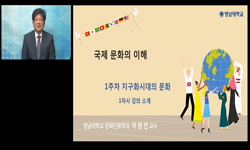이 연구는 1960~70년대 ‘양서(良書)’라는 문화적 기획이 구성된 과정을 민족적·초국적 범위에서 탐구하고, 그것이 국내 번역 출판 장에 어떤 효과를 가져왔는지 이해하려는 시도다. 당대 ‘...
http://chineseinput.net/에서 pinyin(병음)방식으로 중국어를 변환할 수 있습니다.
변환된 중국어를 복사하여 사용하시면 됩니다.
- 中文 을 입력하시려면 zhongwen을 입력하시고 space를누르시면됩니다.
- 北京 을 입력하시려면 beijing을 입력하시고 space를 누르시면 됩니다.

번역서의 문화적 정당성과 트랜스/내셔널리티― 1960~70년대 ‘양서(良書)’의 형성과 변화 = Cultural Legitimacy of Translated Books and Trans/nationality― “Great Books” in the 1960~70s
한글로보기부가정보
국문 초록 (Abstract)
이 연구는 1960~70년대 ‘양서(良書)’라는 문화적 기획이 구성된 과정을 민족적·초국적 범위에서 탐구하고, 그것이 국내 번역 출판 장에 어떤 효과를 가져왔는지 이해하려는 시도다. 당대 ‘양서’의 기준이 무엇인지는 합의되지 않았지만, 그것은 출판 실천의 목표이자 문화정치의 수단으로 자리 잡았다. 대내적인 차원에서 ‘양서’는 ‘민족문화 발전’의 수단이라는 상상적 의미 작용의 결과로 나타났다. ‘양서’는 1960년대 중반 번역 출판 장과 정부의 공모적 제도화를 거치며 전 사회에 상징폭력을 행사했다. 그것은 번역 출판 장의 전문화를 가져온 상징투쟁의 대상이었으며, 정부가 국민을 동원하기 위한 문화정치적 대상이었다. 한편 대외적인 맥락에서 그것은 국내 번역 출판 장과 정부가 불평등하게 구조화된 번역 출판의 세계 체제에서 국제적 상징투쟁을 위해 내세운 무기이면서, 전 지구적 정치경제적 권력 작용을 승인한 결과였다. ‘양서’는 그 지향을 민족문화 창달과 세계로의 진출로 강박적으로 축소함으로써, 그러한 지정학적 권력관계를 비판할 수 있는 기회를 상실했다. 결론적으로 이 연구는 장의 역학과 국제성에 대한 지향, 정부의 문화 관리와 전 지구적 권력관계 속에서 만들어진 ‘양서’의 문화적 정당성이 1970년대부터 모순을 드러내며, 오히려 스스로 교양으로써의 동원을 약화시키는 결과를 가져왔음을 주장할 것이다.
다국어 초록 (Multilingual Abstract)
This study examines the development of the cultural project of “Yangseo” (Great Books) in 1960-70s at both national and transnational scales. It aims to understand how cultural legitimacy functions within the domestic translation and publishing fi...
This study examines the development of the cultural project of “Yangseo” (Great Books) in 1960-70s at both national and transnational scales. It aims to understand how cultural legitimacy functions within the domestic translation and publishing field. Despite the absence of a precise consensus on the criteria for “Yangseo” during this period, it emerged as both the objective of publishing practices and an instrument of cultural politics. Within the publishing discourse, “Yangseo” materialized through an imaginary meaning-making process, positioning it as a vehicle for the “development of national culture” at a national level. Elements such as the quality of translation, the reputation of the producer (the author or editor), the materiality of the format, and awards as objectified symbolic capital were presented as essential criteria for “Yangseo.” Through the collusive institutionalization between the translation and publishing field and the government in the mid-1960s, “Yangseo” exerted symbolic violence throughout society. It served as the driving force behind the professionalization of the field and as a cultural-political tool for government mobilization of the populace. In the transnational context, “Yangseo” operated as a weapon for the Korean publishing field and the government to engage in international symbolic struggles within the unequal world system of translation and publishing, while also being a product of global politico-economic power dynamics. However, from the 1970s onward, the symbolic violence associated with “Yangseo” increasingly exposed contradictions, undermining its cultural orientation. In conclusion, this study contends that the cultural project of “Yangseo” paradoxically laid the groundwork for the production of “Akseo” (Bad Books) and contributed to the erosion of its own cultural legitimacy.
동일학술지(권/호) 다른 논문
-
- 성균관대학교 대동문화연구원
- 배항섭
- 2024
- KCI등재
-
- 성균관대학교 대동문화연구원
- 원세진
- 2024
- KCI등재
-
- 성균관대학교 대동문화연구원
- 김영진
- 2024
- KCI등재
-
『朝鮮文壇』의 독자 투고와 대중 교양으로서의 서정시― 1920년대 문예시장에서 ‘국민문학론’의 맥락
- 성균관대학교 대동문화연구원
- 이재은
- 2024
- KCI등재




 KISS
KISS





